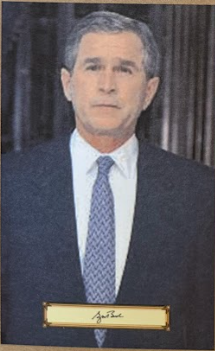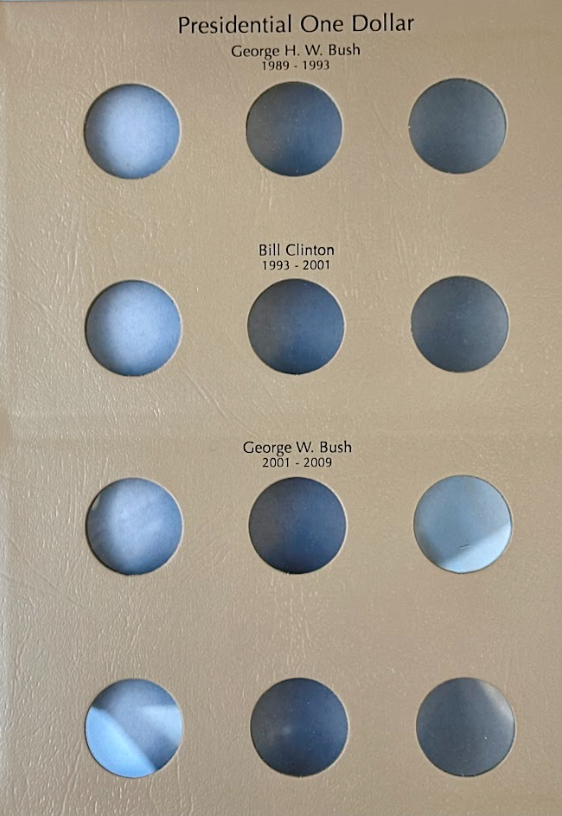This second volume continues the Presidential $1 series, beginning with Chester A. Arthur (2012) and concluding with Ronald Reagan. The album includes coins from the Philadelphia and Denver Mints along with proof strikes from the San Francisco Mint. While a coin for George H. W. Bush was authorized more recently, it is not included here. Jimmy Carter had not been honored with a coin at the time this album was completed.
The Presidency (click to expand)
The Presidential Oath of Office
“I do solemnly swear (or affirm) that I will faithfully execute the Office of President of the United States, and will to the best of my Ability, preserve, protect and defend the Constitution of the United States.”
Qualifications for the Presidency of the United States
Constitution – Article II, Section 1, Paragraph 5:
No person except a natural born Citizen, or a Citizen of the United States at the time of the Adoption of this Constitution, shall be eligible to the Office of President; neither shall any person be eligible to that office who shall not have attained to the age of thirty-five years, and been fourteen years a Resident within the United States.
Origins of the Term “President”
Originally the term referred to someone who “presided” over a meeting or ceremony. By the mid-1700s some American colleges used the title for their heads. When the Constitution introduced the office of President in 1787, the term became the title for the head of state of a republic. Powers and duties vary world-wide: some presidents are largely ceremonial, others can dissolve parliament.
Presidents’ Day
Until 1971, February 12 (Lincoln) and February 22 (Washington) were separate federal holidays. In 1971 President Richard Nixon proclaimed a single holiday—Presidents’ Day—observed on the third Monday of February to honor all past U.S. presidents.
Presidential Politics
As party leader, the President advances the party’s agenda, proposes legislation, and wields the veto. He or she also answers to national and state organizations, political-action committees, donors, volunteers, and elected party officials—creating a web of mutual debts and credits throughout the political process.
Government Administration
Article II grants the President broad executive power, from Commander-in-Chief duties to the authority to appoint (and remove) federal judges and executive-branch leaders. Agency heads serve at the President’s pleasure and are expected to carry out presidential policy directives.
How a President Is Elected: The Conventions
Since the 1950s, state primaries and caucuses choose delegates to the national conventions. During the summer of an election year each party’s convention adopts a platform, then votes—sometimes through many ballots—to choose its presidential and vice-presidential nominees.
How a President Is Elected: The Electoral College
Voters elect state electors, not the President directly. A state’s popular-vote winner receives all its electoral votes. Electors meet in December; results are counted before Congress on January 6. If no candidate wins an electoral majority, the House chooses the President (one vote per state) and the Senate chooses the Vice President. Four times (1824, 1876, 1888, 2000) a candidate with the largest popular vote failed to win an electoral majority.
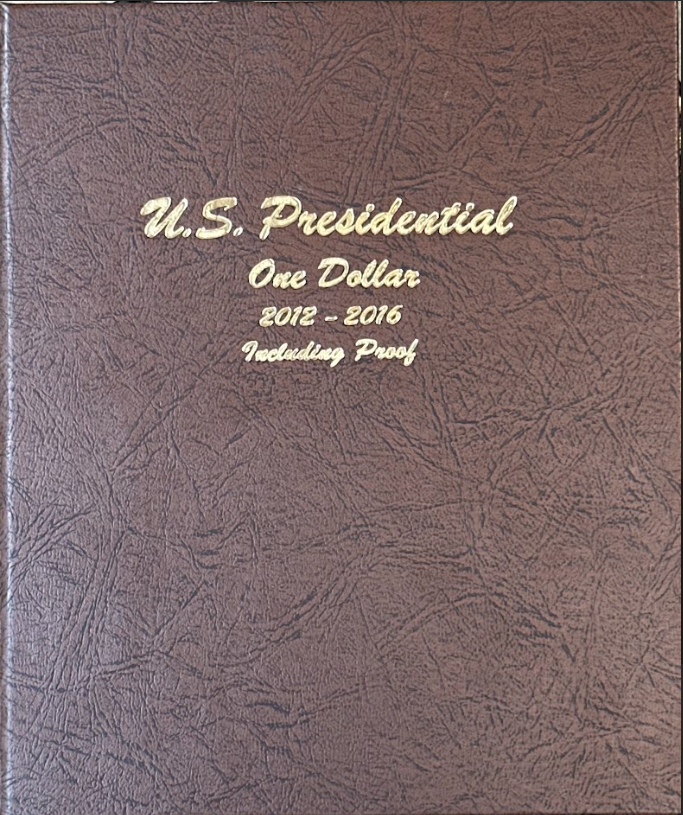
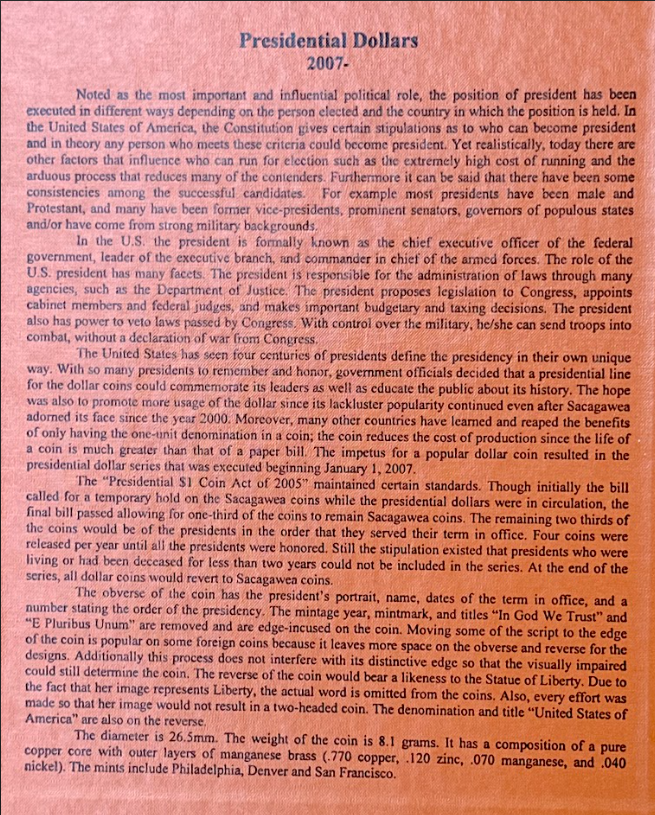
Chester A. Arthur – 21st President (click to expand)
Also known as “The Gentleman Boss” and “Elegant Arthur,” he assumed the presidency after President Garfield was assassinated. The son of an Irish-born Baptist clergyman, he graduated from Union College in 1848. In 1854, he was admitted to the Bar in New York City. As a young lawyer, he won a case that allowed blacks to ride New York City streetcars. He was an advocate of blacks’ rights and was known as an abolitionist’s lawyer. On October 29, 1859, he married Ellen Lewis Herndon, the daughter of a Naval officer, who bore him two children. A member of the Republican Party, he campaigned for Abraham Lincoln and was later appointed general of the militia in New York during the Civil War. He was fond of fine food and clothes and as president, had the White House completely renovated. He restricted Chinese immigration to the U.S. through the Chinese Exclusion Act of 1882. He supported an increase in funding for the Navy; this began the Navy’s growth as a powerful military force. He died of a kidney-related illness in his New York home.
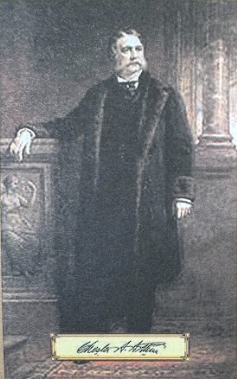
Grover Cleveland — 22nd President and 24th President (click to expand)
The fifth son of a Presbyterian pastor, he taught at a school for the blind in New York City, at the age of 16. After his father died in 1853, he lived with his uncle in Buffalo, New York where he eventually studied law. In 1859, he was admitted to the Bar and in 1863, became assistant district attorney of Erie County. An anti-war democrat, he paid a Polish immigrant $150 to serve for him in the Civil War; this was legal under the Federal Conscription Act. In 1883, he became governor of New York. As president, he recited his inaugural address without notes. He was the only president to serve two non-consecutive terms. On June 2, 1886, he married Frances Folsom at the White House; she subsequently bore him five children. He established federal regulation of railroads in 1887 when he signed the Interstate Commerce Act. In 1893, he survived a cancer operation of his jaw. He was known as an honest president who vetoed a great deal of special interest legislation and filled many government jobs with those best qualified instead of party loyalists. In 1894, he stopped the Pullman Railroad Strike by using federal troops, thus allowing for the continuation of mail service. After his presidency, he lived in Princeton, New Jersey and became a trustee of Princeton University. He lived there until his death of heart and kidney disease.
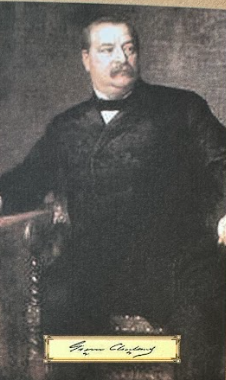
Benjamin Harrison — 23rd President (click to expand)
Also known as “Kid Gloves Harrison” and “Little Ben,” he was the only grandson of a president to become president. He was named after his great-grandfather, a signer of the Declaration of Independence, and was seven years old when his grandfather became president. He graduated from Miami University in Oxford, Ohio, in 1852. On October 20, 1853, he married Caroline Lavinia Scott, the daughter of the president of an all women’s school, who bore him two children. A veteran of the Civil War, he returned to the practice of law before returning to politics. In 1876, he accepted his party’s nomination for governor of Indiana, but was defeated in the election. In 1881, he became an Indiana U.S. Senator. During his presidency, he authorized the Sherman Silver Purchase Act of 1890, which forced the Treasury to purchase additional silver currency. He expanded the Navy and the Merchant Marine; he greatly increased Union veterans’ pensions through the Dependent Pension Act. Also during his term of office, Idaho, Wyoming, Washington, Montana, and North and South Dakota became states. Thus the western frontier no longer existed. In 1892, his wife died; he married her niece, Mary Scott Lord Dimmick, in 1896. He died of pneumonia.
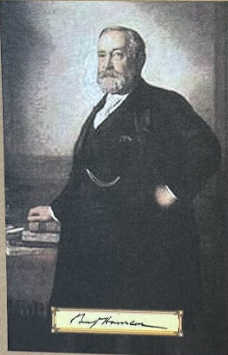
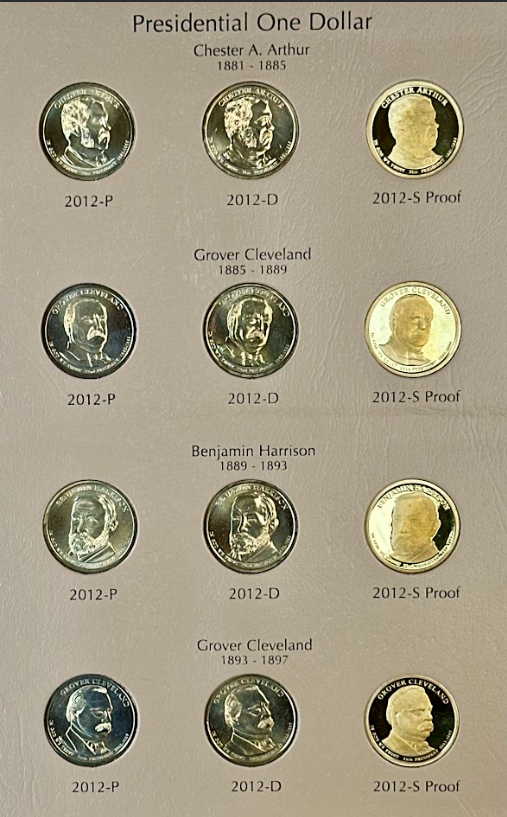
William McKinley — 25th President (click to expand)
Also known as “Idol of Ohio,” he set the highest tariff in history in 1897 in order to protect American jobs. The son of a Scottish-Irish foundry worker, he was the seventh of nine children. He was greatly influenced by his religious mother who wanted him to become a minister. He attended Allegheny College, but had to leave due to illness. When he was eighteen, he enlisted as a volunteer in the Civil War. He was recognized for his valiant efforts and quickly rose in rank, leaving the army as a major when the war was over. He studied law and was admitted to the Bar in 1867. On January 25, 1871, he married Ida Saxton, daughter of a wealthy banker. They had two daughters, both of whom died young. This caused his wife to suffer from depression the rest of her life. He was the first presidential candidate to campaign over the telephone. In 1898, during his presidency, the Spanish-American War was waged. This dispute over Cuba and the Philippines, lasted less than four months and resulted in the U.S. obtaining the Philippines, Guam and Puerto Rico. He was the third president to be assassinated. Anarchist Leon Czolgosz shot him.
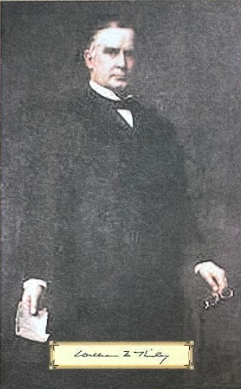
Theodore Roosevelt — 26th President (click to expand)
Also known as “TR” and “Trust-Buster,” he was son of a wealthy New York City banker; he was privately tutored and suffered from asthma in his youth. His sickly disposition resulted in his desire for superior physical strength so he became involved in a variety of sports including boxing which later cost him the sight of one eye. He graduated from Harvard College in 1880. On October 27, 1880 he married Alice Hathaway Lee. He became a representative in the New York state legislature in 1882. His wife died in 1884 after giving birth to his daughter. His grief took him west to the Dakota Territory where he became a cattle rancher for several years. On December 2, 1886 he married Edith Kermit Carow. At the age of 42, he was the youngest president in U.S. history to take office. In 1904, he signed a treaty with Panama which allowed for the construction of the Panama Canal under U.S. sovereignty. He earned the Nobel Peace Prize in 1906 for negotiating the treaty ending the Russo-Japanese War. His popular foreign policy motto was “Speak softly and carry a big stick,” as he continued McKinley’s initiative of making the U.S. a world power. He was the first president to drive in a car and ride in an airplane. Allegedly, the teddy bear was named after him when he refused to shoot a bear and her cub while hunting.
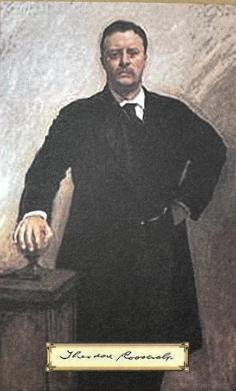
William Howard Taft — 27th President (click to expand)
Also known as “Willie” in his childhood years, he was the son of a demanding father who served, among other posts, as judge, an attorney general and Secretary of War. Always excelling in academics, he graduated from Yale University in 1878. He then studied at Cincinnati Law School and was admitted to the Bar in 1880. On June 19, 1886, he married Helen Herron, a prestigious attorney’s daughter; she bore him three children. During his presidency, Arizona and New Mexico were admitted to the Union. In 1913, the 16th Amendment, which authorized Congress to collect income tax, was ratified. He was the heaviest president weighing 300 pounds. To accommodate his size, he had a special bathtub installed in the White House. He was the first president to throw the opening pitch for a baseball season. After his presidency, he taught law at Yale and in 1921, became chief justice of the Supreme Court. A month after resigning from the Court, he died of heart-related problems and became the first president to be buried in Arlington National Cemetery.
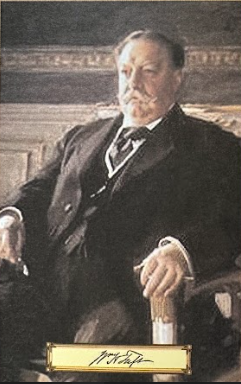
Woodrow Wilson — 28th President (click to expand)
Also known as “Tommy” in his childhood years and later as “Schoolmaster in Politics,” he was the son of a Presbyterian minister whose desire to see his son become a minister was never fulfilled. In 1879, he graduated from Princeton University and later, in 1902, he became president of this institution. He studied at the University of Virginia Law School and later obtained a Ph.D. from Johns Hopkins University. In 1911, he became governor of New Jersey. During his presidency, the U.S. declared war on Germany in 1917 thus entering WWI. He received the Nobel Peace Prize in 1919 for his efforts toward ending WWI and establishing the League of Nations. During his presidency, the U.S. purchased the Virgin Islands from Denmark and under the 19th amendment women received the right to vote. He also lowered tariff rates and established a federal income tax, as well as establishing the Federal Reserve and the Federal Trade Commission. He died in his sleep and is buried in Washington, D.C.
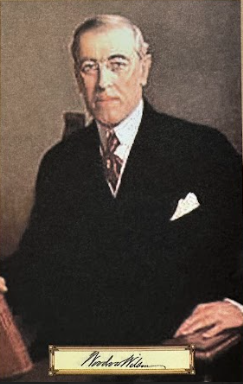
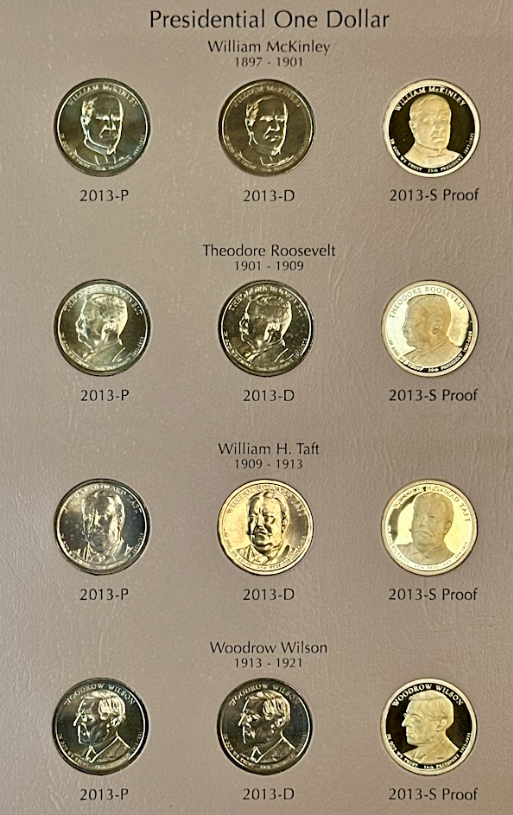
Warren Gamaliel Harding — 29th President (click to expand)
The son of farmers and the eldest of eight children, he graduated from Ohio Central College in 1882. After college, he attempted teaching, studying law and selling insurance. But his passion was for journalism; as a reporter he was exposed at a young age. He worked for the Marion Democratic Mirror as a pressman and writer but his political views clashed with those of the owner. He then co-purchased a floundering newspaper, the Marion Star, and made it a successful Republican publication. On July 8, 1891, he married Florence Kling DeWolfe, a wealthy widow who helped him succeed in his business and political career. He became the first newspaper publisher to be elected president. During his presidency, he was the first to place quotas on immigration by signing the Immigration Restriction Act of 1921. He was the first president to visit Alaska and Canada and the first to speak on the radio. He played poker every week and allegedly gambled away an entire set of White House china. His administration was surrounded by corruption scandals that were mostly revealed after his death. He died of an embolism after only two years in office.
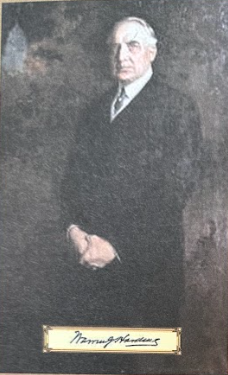
Calvin Coolidge — 30th President (click to expand)
Also known as “Silent Cal,” he was the only president sworn in by his father, a justice of the peace. He graduated from Amherst College in 1895 and then studied law in Massachusetts. In 1897, he was admitted to the Bar. On October 4, 1905, he married Grace Anna Goodhue, a teacher at an institute for the deaf in Northampton. She bore him two sons. He began his political career as a city councilman of Northampton in 1898 and in 1910 became mayor. In 1919, he became governor of Massachusetts. He assumed the presidency after Harding died. During his presidency, he sent U.S. Marines to Nicaragua after a civil dispute broke out there in 1927. He opposed government involvement in private enterprise as proven by his vetoes of two farm relief bills. He was also known as the president who slept and napped more than any other president. After his presidency, he died of a heart attack, while shaving, in his Northampton home.
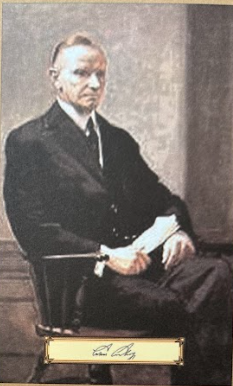
Herbert Clark Hoover — 31st President (click to expand)
The son of a Quaker blacksmith, he was orphaned at a young age and sent to live with his uncle in a Quaker settlement in Oregon. He was the youngest member of Stanford University’s first graduating class. He went to work for a mining company in Australia and was transferred to China in 1899. On February 10, 1899, he married Lou Henry, a geology student from Stanford, who bore him two sons. He became wealthy serving as a consulting engineer in mining. While in London in 1914, WWI began and he served as chairman of the Commission for Relief to France and Belgium. During his presidency, the New York Stock Market crashed on October 29, 1929, and the Great Depression that followed was blamed on his presidency.
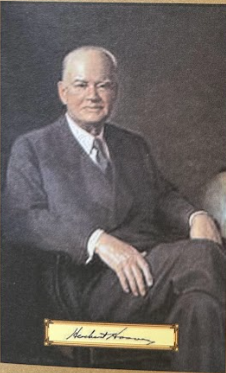
Franklin Delano Roosevelt — 32nd President (click to expand)
Also known as “FDR,” he was the only president to be elected for four terms. An only child of moderately wealthy parents, his early passions included bird watching, natural history, swimming and sailing. In 1903, he graduated from Harvard University. On March 17, 1905 he married Anna Eleanor Roosevelt, a distant cousin; she bore him six children. He studied law at Columbia University and was admitted to the Bar in 1907. In 1911, he became senator of New York. In 1921, at the age of 39, he was diagnosed with polio and never regained the full use of his legs. During his presidency, he launched the “New Deal” relief measures to help counter the Great Depression and in 1935, the Social Security Act was established. Also during his presidency, in 1938, the Fair Labor Standards Act set a minimum wage and limited the number of hours to be worked in a week. He was the first president to appoint a woman to his cabinet. After Pearl Harbor was attacked in December, 1941, he declared war against Japan and the Axis powers. The U.S. then entered WWII. He was related by blood or marriage to 11 former presidents. He died in office of a brain hemorrhage.
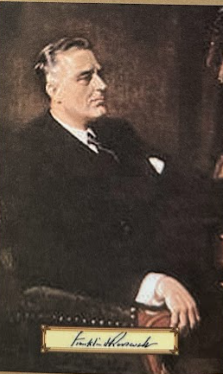
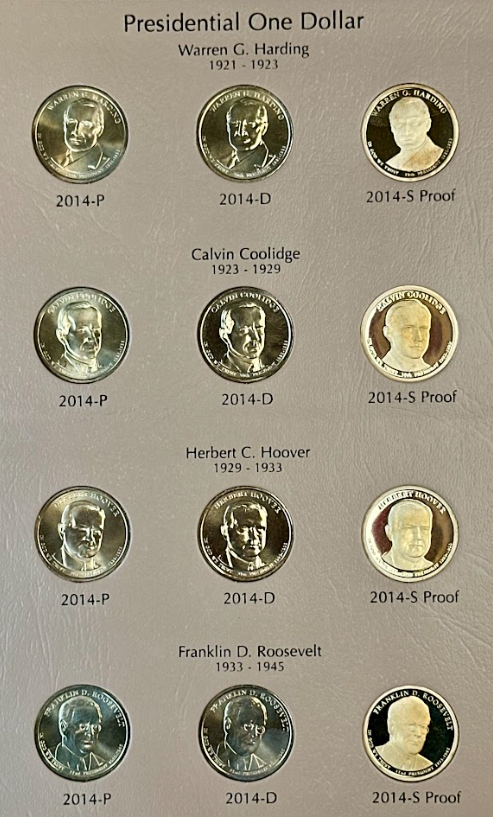
Harry S. Truman — 33rd President (click to expand)
Also known as “Give ‘Em Hell Harry,” he was the son of a mule trader and the eldest of three children. His middle initial does not stand for anything; it is just an initial. He joined the army during World War I and was soon appointed first lieutenant. On June 28, 1919, he married Elizabeth Virginia “Bess” Wallace. He did not have a college education. In 1923, he was sworn in to his first public office, a county judgeship. In 1934, he became a senator from Missouri. He was sworn into the presidency when Franklin Roosevelt died. During his presidency, he ordered the dropping of two atomic bombs on Hiroshima and Nagasaki, ending Japan’s surrender in August of 1945 and the end of World War II. Also, the Marshall Plan was initiated in 1947 and war-torn Europe began rebuilding. In 1950, he committed U.S. forces to the United Nations’ effort to assist South Korea which had been invaded by North Korea. In 1950, he survived an assassination attack by two Puerto Rican nationalists. He died of a respiratory infection and is buried at the Truman Library in Independence, Missouri.
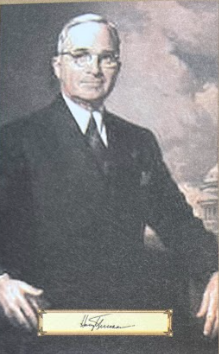
Dwight David Eisenhower — 34th President (click to expand)
Also known as “Ike” or “Kansas Cyclone,” he was the second West Point graduate to become president. On July 1, 1916, he married Mamie Geneva Doud, who bore him two sons, one dying in childhood. During World War I, he was assigned as a training captain in Pennsylvania and was never sent to combat. In 1932, he was aide assistant to Chief of Staff General Douglas MacArthur. He served the country throughout WWII. In 1944, he was made brigadier general and, in 1942, general of the U.S. forces in Europe. In 1945, he became Chief of Staff of the U.S. Army. After the war he became the president of Columbia University. In 1948, in 1951, he was appointed as supreme commander of NATO forces in Europe. During his presidency, he reached an agreement in 1953, with the communists that ended the Korean War. He also established the Department of Health, Education and Welfare. He sent troops to Little Rock, Arkansas to make certain integration took place at Central High School. He was the last president born in the 19th century and the only president to serve in both World Wars. He had a passion for cooking and was also the first president licensed to fly an airplane. He died of heart failure and is buried in his childhood home in Abilene, Kansas.
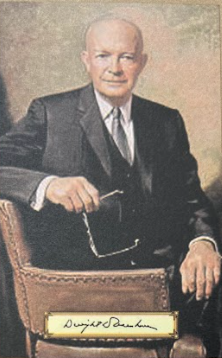
John Fitzgerald Kennedy — 35th President (click to expand)
Also known as “JFK” and “Jack,” he was the second son of nine children. He was from a wealthy Bostonian family and graduated from Harvard University in 1940. He then attended Stanford’s business school. During WWII, he commanded a PT boat in the South Pacific. After his brother Joseph was killed in 1944 during the war, John entered politics. On September 12, 1953, he married Jacqueline Lee Bouvier, a photographer for the Washington Times-Herald, who bore him 3 children. At the age of 43, he was the youngest president elected to office. He had a strong commitment to civil rights and established the Peace Corps in 1961. He advocated a possible nuclear war by timely withdrawing a naval blockade he had previously authorized around Cuba. He was a strong civil rights advocate and sent federal troops to the South multiple times. He was also a strong supporter for a space exploration program. He was the 4th president to be assassinated; this occurred on November 22, 1963, in Dallas, Texas. He was the first Roman Catholic president and the first to be born in the 20th century.
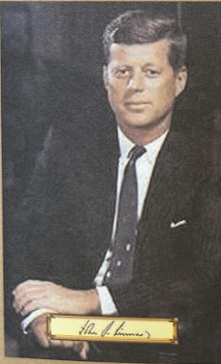
Lyndon Baines Johnson — 36th President (click to expand)
Also known as “LBJ,” he assumed the presidency after Kennedy’s assassination. The eldest of five children and the son of two teachers, he traveled to the West Coast after high school and held odd jobs such as picking fruit. In 1930, he graduated from Texas State Teachers’ College. He was a teacher for about a year before he found his first job in politics as a private secretary to a congressman. On November 17, 1934, he married Claudia Alta “Lady Bird” Taylor, a graduate of the University of Texas, who bore him two daughters. During his presidency, he expanded the Vietnam War. He served as a lieutenant commander in the U.S. Navy. In Congress, he signed into legislation establishing the Department of Housing and Urban Development. He signed the Civil Rights Act of 1964, which made racial discrimination illegal. He also established a Medical Care program for senior citizens. He also sent combat troops to South Vietnam, which escalated the fight against communism. This controversial war overshadowed his successful domestic policies, which he called the “Great Society.” He was the first serving president to meet with a Pope.
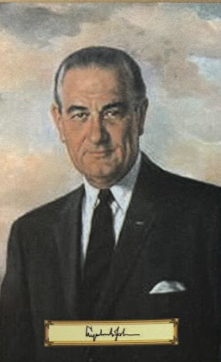
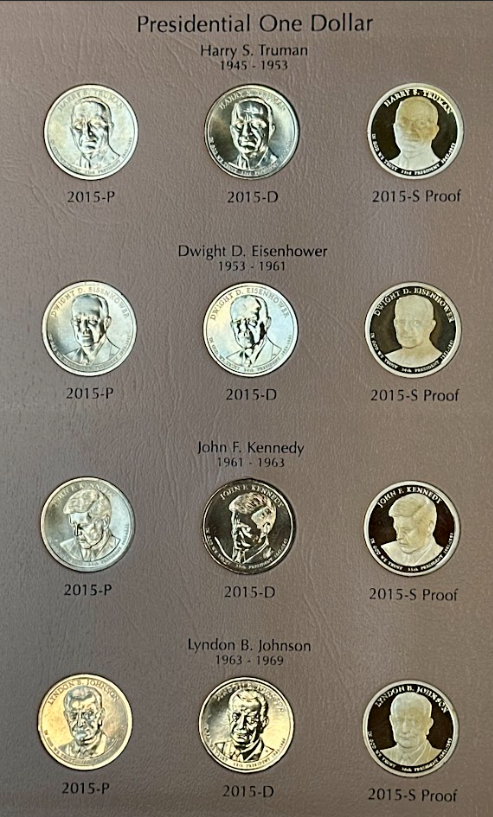
Richard Milhous Nixon — 37th President (click to expand)
Also called “Tricky Dick,” he was the second of five sons raised by a Scots-Irish father and a Quaker mother. In 1940, he graduated from Whittier College in California and in 1937, from Duke University Law School. He began to practice law and worked for a few years. On June 21, 1940, he married Thelma Catherine “Pat” Ryan, a typing teacher who bore him two daughters. During WWII, he joined the Navy as a lieutenant and was sent to the South Pacific. During his presidency, he signed trade agreements and made historic visits to both China and the Soviet Union. He also signed pacts with Neil A. Armstrong who walked on the moon in 1969. After a peak in the Vietnam War effort, in 1970, he sent U.S. troops to Cambodia to destroy enemy sanctuaries. In 1973, the Vietnam War ended. On August 9, 1974, he was the first president to voluntarily resign from office because of allegations about his involvement with the Watergate Affair. He lived a life of reflection and is buried at the Richard Nixon Library in California.
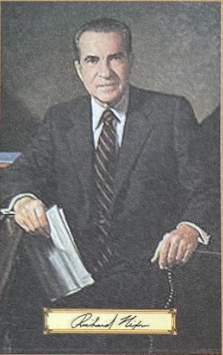
Gerald Rudolph Ford — 38th President (click to expand)
Also known as “Jerry,” he was born as Leslie Lynch King Jr., but was given his stepfather’s name when his mother remarried. A standout young football player, he went to the University of Michigan on an athletic scholarship and graduated in 1935. In 1941, he graduated from Yale University Law School. He enlisted in the U.S. Navy during WWII. On October 15, 1948, he married Elizabeth Bloomer Warren, a divorced department store fashion model, who bore him four children. He became a U.S. representative from Michigan in 1949. He was the first president to release his full medical record to the public. He also was the first president not elected by the people: Nixon appointed him vice president when Spiro Agnew resigned and then president when Nixon resigned. Only a month after taking office, he granted Nixon a full pardon for any crimes he may have committed in office. He tarnished his presidency as many Americans saw this as a misuse of power. He was the first to have two assassination attempts on his life, both by women.
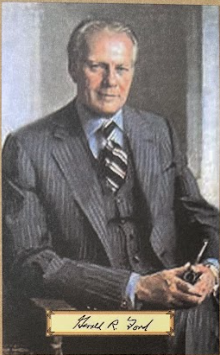
James Earl Carter — 39th President (click to expand)
Also known as “Jimmy,” he was the first president sworn in under his nickname. The son of a peanut farmer, he was the eldest of four children. He studied one year each at Georgia Southwestern College and Georgia Institute of Technology. In 1946, he graduated from the U.S. Naval Academy. On July 7, 1946, he married Rosalynn Smith, his high school sweetheart, who bore him three sons. In 1953, he returned to the peanut farm to help his mother when his father fell ill. His first elective office was on a local school board; later, in 1963, he was elected senator from Georgia. During his presidency, radical Iranian students seized American hostages and embassy officials in Tehran in protest of U.S. support of the Shah. In 1977, he signed a treaty to return the U.S. to end operations in 1999, in the Panama Canal. In 1979, he signed a bill creating the Department of Education. He was the first president to graduate from the Naval Academy and the first to provide numerous, high-level government jobs to minorities and women.
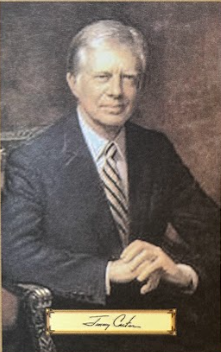
Ronald Wilson Reagan — 40th President (click to expand)
Also known as “Ron,” he was the second of two sons. In 1932, he graduated from Eureka College in Illinois. His early passions included swimming, football and acting. In 1936, he became a radio sportscaster and later moved to Hollywood, where he left for Hollywood and started an acting career that would last 20 years. He appeared in over fifty films. On January 25, 1940, he married Jane Wyman, a fellow actress. They had two children, including one adopted son; they divorced in 1948. On March 4, 1952, he married Nancy Davis, another actress. She bore him two children. Before becoming president, he joined the Republican Party. In 1966, although he had never held public office, he became governor of California in 1967. During his presidency, he lowered income tax, appointed the first woman to the U.S. Supreme Court, Sandra Day O’Connor, and was outspoken on the topic of communism. His “Reagan Doctrine” was based on U.S. forces’ reversal in the Middle East. He combated aggressive and foreign governments with communist ties, including Grenada. He left office at the age of 77, the oldest president ever to have been elected and the oldest president to complete a term. In 1994, he announced that he had Alzheimer’s disease. He died due to complications from this disease, ten years later.
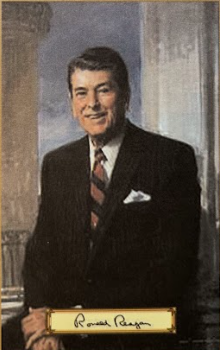
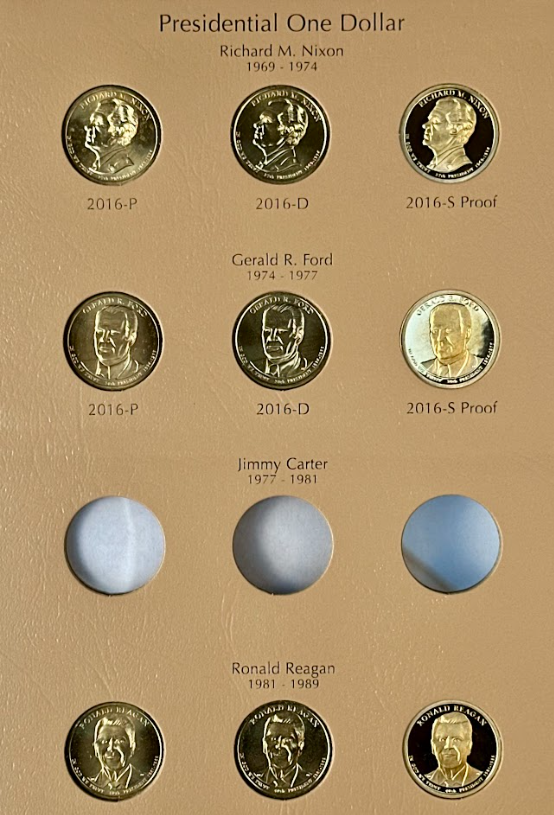
George Herbert Walker Bush — 41st President (click to expand)
Born into a wealthy family, he enlisted in the Navy on his 18th birthday and became a pilot. He flew 58 combat missions in the Pacific during WWII and was shot down in 1944. After the war, he married Barbara Pierce and moved to Texas, where he became an oil executive. He later served as a congressman, ambassador to the United Nations, chairman of the Republican National Committee, U.S. envoy to China, and director of the CIA. He served as vice president under Ronald Reagan for two terms. In 1988, he was elected president and led a successful military campaign against Iraq during the Gulf War in 1991. Domestically, he signed the Americans with Disabilities Act and worked on budget reforms. Despite high approval ratings after the Gulf War, he lost reelection in 1992 during an economic recession.
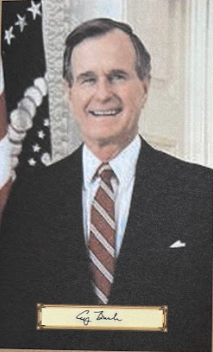
William Jefferson Clinton — 42nd President (click to expand)
Born William Jefferson Blythe IV, he later took the last name of his stepfather. Raised in Arkansas, he was a gifted student and saxophone player. He attended Georgetown University, earned a Rhodes Scholarship to Oxford, and received a law degree from Yale, where he met Hillary Rodham. They married in 1975 and had one daughter. He became governor of Arkansas at age 32 and later ran for president as a centrist Democrat. As president, he oversaw a period of economic prosperity, welfare reform, and budget surpluses. His second term was marred by a scandal involving a White House intern, Monica Lewinsky. He was impeached by the House of Representatives but acquitted by the Senate and completed his term with strong approval ratings.
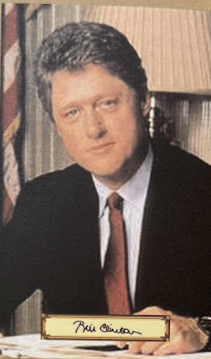
George Walker Bush — 43rd President (click to expand)
The eldest son of George H. W. Bush, he grew up in Texas. He earned a degree from Yale and an MBA from Harvard. After working in the oil industry and co-owning the Texas Rangers baseball team, he was elected governor of Texas in 1994. In 2000, he won the presidency after a contested election and Supreme Court decision. His presidency was defined by the September 11, 2001 terrorist attacks. He launched the War on Terror, leading to wars in Afghanistan and Iraq. Domestically, he passed tax cuts, education reform (No Child Left Behind), and Medicare prescription drug coverage. His second term faced challenges, including Hurricane Katrina and the 2008 financial crisis.
